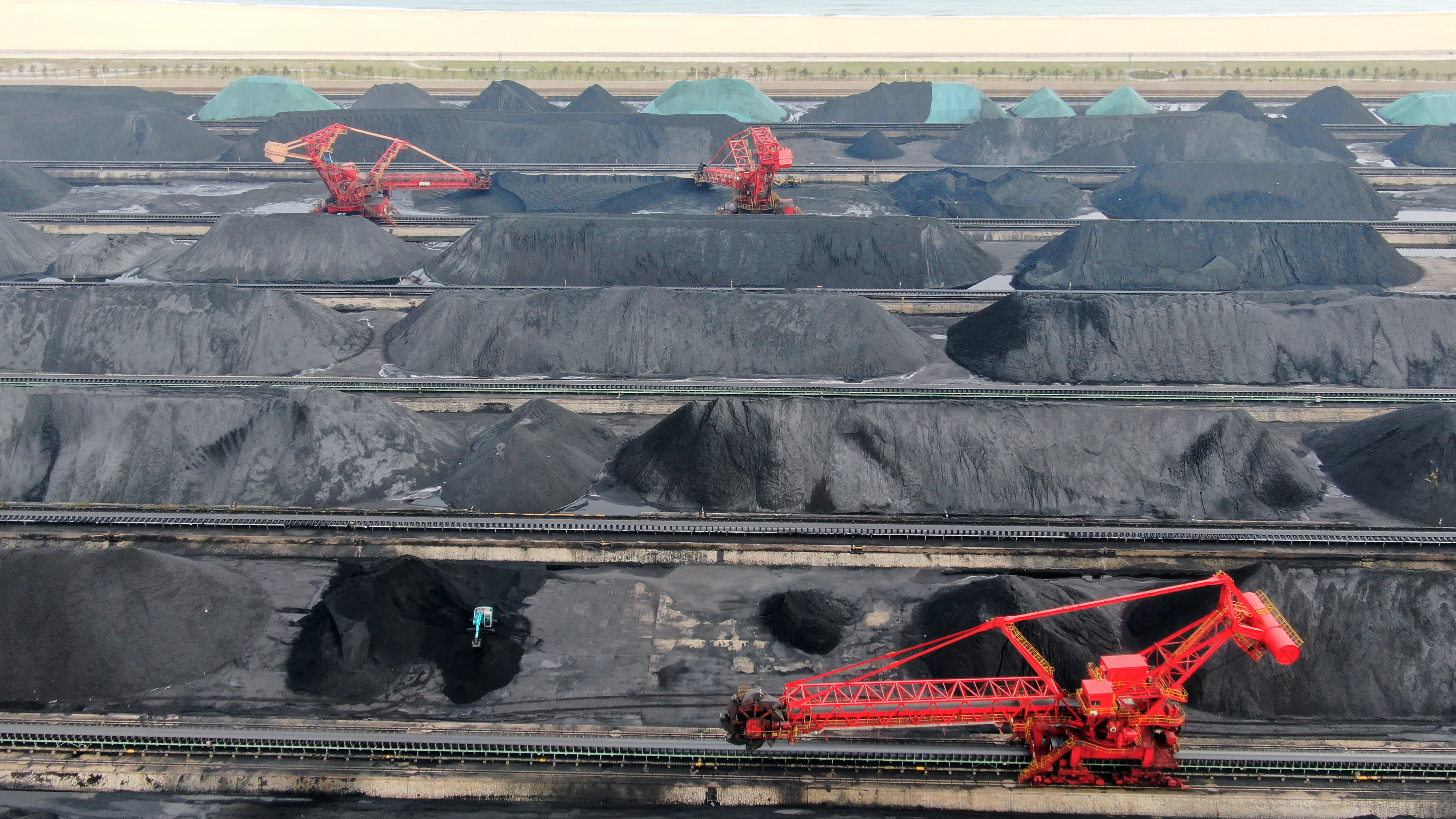
Piles of coal at Rizhao port in China’s Shandong Province on Nov. 2, 2021.
VCG | Visual China Group | Getty Images
Asia-Pacific is home to some of the world’s largest carbon emitters — and experts say much of global efforts to fight climate change depends on Asian countries cutting their reliance on coal.
The region accounted for 52% of global carbon dioxide emissions last year, according to the latest edition of BP’s Statistical Review of World Energy, a widely cited report.
China alone contributed 59% of the region’s emissions, while India made up 13.7%, the report showed.
Global leaders and environmentalists were gathered in Glasgow, Scotland this month for the United Nations climate change summit, known as COP26. They’re hoping to eventually phase out the use of fossil fuels — including coal — to cut carbon emissions and limit global warming.
On Thursday, 28 countries joined an international alliance dedicated to phasing out coal, but the world’s biggest burners of coal — such as China and India — did not sign up.
Move to renewables is ‘far too slow’
Coal accounted for more than a quarter of the world’s primary energy consumption. Primary energy refers to energy in its original form — such as coal and oil — and before it’s converted into other resources.
Slightly less than half — or about 47.8% — of the energy consumed in Asia-Pacific last year came from coal, according to data in the BP report. That percentage of coal consumption is the highest among geographic groups featured in the report, which included Africa, Europe and North America.
While net zero targets come thick and fast … virtually all lack details on how these will be achieved.
Gavin Thompson
Asia-Pacific vice chairman, Wood Mackenzie
Within Asia-Pacific, coal made up more than half of energy consumed in China and India last year, the data showed.
The region’s move away from fossil fuels toward renewable sources has remained “far too slow,” said Gavin Thompson, Asia-Pacific vice chairman at energy consultancy Wood Mackenzie.
“Much of this stems from government policy. And while net zero targets come thick and fast … virtually all lack details on how these will be achieved,” Thompson said in an October report.
“Without progress in policy, Asia’s future growth still looks too reliant on fossil fuels, particularly coal,” he added.
Net zero emissions refer to achieving an overall balance between greenhouse gas emissions produced and greenhouse gas emissions removed from the atmosphere, through either natural means or by using the still nascent carbon capture technology.
Asian countries getting on board
Asian countries that have announced their climate pledges include:
Indonesia — the world’s largest thermal coal exporter — aims to meet 23% of its energy needs with renewable sources by 2025 and reach net-zero carbon emissions by 2060.
A combination of taxation and subsidies would be needed to help coal firms gradually transition to greener industries, said Indonesia’s Finance Minister Sri Mulyani Indrawati.
“We don’t want to kill the business, we want it to have an affordable and just transition,” she told CNBC’s Sustainable Future Forum in October.
China and India’s role
The use of coal is among the many issues dividing advanced and developing countries as they seek to limit the damage on the environment.
India previously argued that developing countries have contributed little to carbon emissions in the past and urged developed countries to play a bigger part. India is the world’s third largest carbon emitter.
China — the world’s largest emitter of carbon dioxide — has also called for developed countries to help their developing peers do more.
It’s not clear whether countries could bridge their differences at the COP26 meeting in Glasgow.
Right before the climate summit, leaders of the Group of 20 major economies failed to explicitly commit to carbon neutrality by 2050 and promise an end to fossil fuel subsidies, economists at French bank Natixis pointed out.
“That leaves the door open for bringing coal-fired plants home, especially for the coal-reliant economies that could suffer severely from the energy transition such as China and India,” the economists said in a report last week.
They noted that targets for net-zero emissions announced by China and India — by 2060 and 2070, respectively — are later than the 2050 timeline deemed necessary to keep global warming within 1.5 degrees Celsius above pre-industrial levels.
The Climate Action Tracker consortium, which tracks government climate actions, policies and targets, rated commitments by both China and India as “highly insufficient.” India’s rating was made before Prime Minister Narendra Modi announced the target for net-zero emissions.
‘Long term’ impact on China growth
Still, China has good reasons to work toward net-zero carbon emissions, said David Murphy, head of China quantitative insight at Credit Suisse.
“Beijing views this as a growth driver, so they’re moving to green energy, to decarbonization as a growth driver just at a time when the traditional drivers in China – housing, fixed asset investment spending – [are] getting towards a peak,” he told CNBC’s “Squawk Box Asia” last week.
Murphy said China has become a leader in industries such as solar energy and electric vehicles. Those industries can generate economic growth for China “for a long time,” he added.
— CNBC’s Saheli Roy Choudhury contributed to this report.
Source: CNBC
